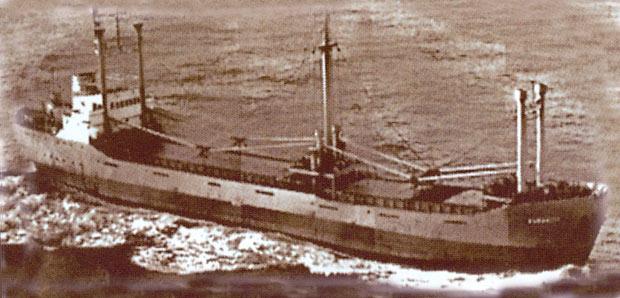
1675
First record of the Aponte family’s involvement in maritime transport to and from Naples.
The Aponte family records date back to the 17th century and testify to its long and unbroken activity in an area with ancient seafaring traditions - the Sorrento Peninsula. The first mention of them is from 1675 and concerns the felucca Giovannina, which for many years plied the routes between Naples and Castellamare on the one hand, and Calabria and Sicily on the other.

1970
Gianluigi Aponte founds the Mediterranean Shipping Company with the purchase of single ship. MSC has since grown to become a world leader in global container shipping operating over 560 vessels.
MSC was founded by Gianluigi Aponte, a young Italian seaman and former bank teller who had the courage and foresight to purchase his first ship, Patricia, in 1970. He acquired an even bigger vessel in 1971, which he named after his wife, Rafaela, followed by the carrier, Ilse, in 1973. These three cargo ships represented the pioneering beginnings of MSC, which has since grown to become a world leader in global container shipping operating over 560 vessels.

1988
MSC announces its entry into the cruise business, purchasing the iconic liner Monterey.
Following the purchase of the Monterey, MSC took over the Lauro cruise line structures in honour of Gianluigi Aponte’s mentor, the Italian shipping magnate Achille Lauro. When two more ships, Rhapsody and Melody, were added to the fleet, MSC Cruises was formally established as a subsidiary of the larger MSC Group.
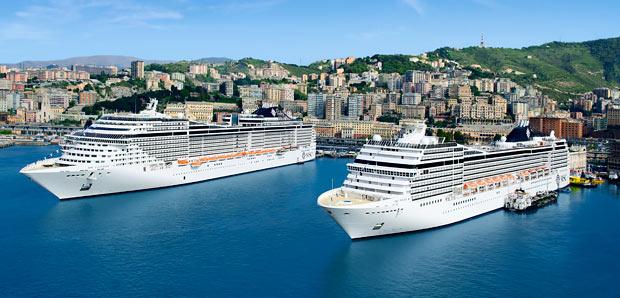
2003 - 2013
Start of a €5.5 billion investment programme to build the world’s most modern cruise fleet.
We boast one of the most modern and dynamic fleets in the world, thanks to a massive €5.5 billion investment programme started in 2003. In just over a decade, we built four beautiful ‘Lirica' class liners, followed by four majestic ‘Musica' class vessels and the four stunning flagships of the ‘Fantasia’ class. All of them feature MSC Cruises’ trademark blend of traditional elegance and innovative design.
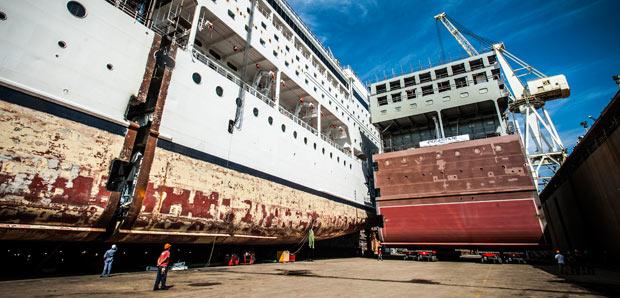
2014
We launched an ambitious €5.1 billion investment plan that comprises the order of up to seven new ships and the Renaissance Programme to enlarge four existing ships of the MSC Cruises fleet.
We launched a new €5bn investment plan to build four revolutionary new ships, plus options for three more, with STX France and Fincantieri. In addition, the Lirica class ships were enlarged and renewed by Fincantieri under the €200m ”Renaissance Programme”, which was completed by late 2015. These ships have now a GT of 65,000 tonnes and carry over 2,000 passengers.
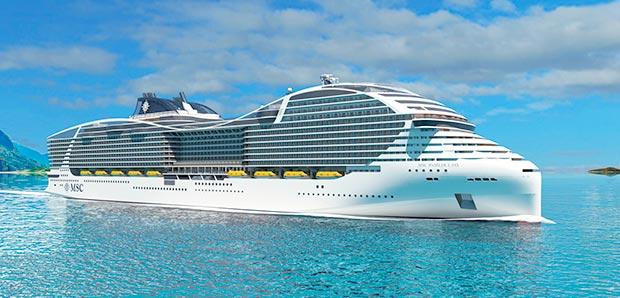
2016
This second phase investment plan is increased from €5.1 billion to €9 billion with the signing of a letter of intent to build a further four World class ships.
This second phase investment plan rose to €9 billion with the signing of a letter of intent to build a further four World class ships, each with next-generation LNG propulsion technology. Consequently, between 2017 and 2026 a total of up to 11 new, next-generation MSC Cruises ships will come into service. MSC Cruises is the first global cruise line brand to develop an investment plan of this length and magnitude, spanning an horizon of over ten years, from 2014 through 2026.
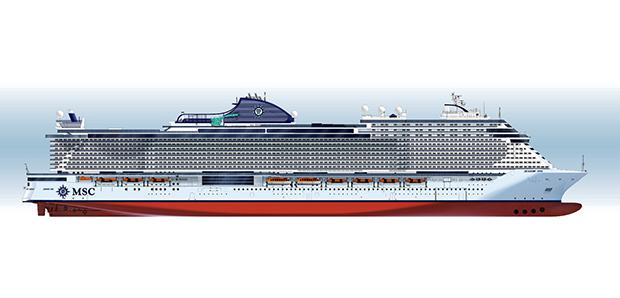
2017-2018
We consolidate our second fleet expansion plan with orders for two additional Seaside ships and a fifth Meraviglia vessel, bringing the total investment for the 2014-2026 period to €11.6 billion.
We consolidate our second fleet expansion plan with orders for two additional Seaside ships and a fifth Meraviglia vessel, bringing the total investment for the 2014-2026 period to €11.6 billion. Due to be delivered in 2021 and 2023, the two Seaside EVO ships will present an evolution of the successful Seaside platform and have a capacity of 5,646 guests. The fifth Meraviglia ship, which will be delivered in 2023, will have a capacity for 6,334 guests. Like the World class ships, she will be equipped with a new generation of LNG-powered engines that will strongly reduce her environmental footprint.
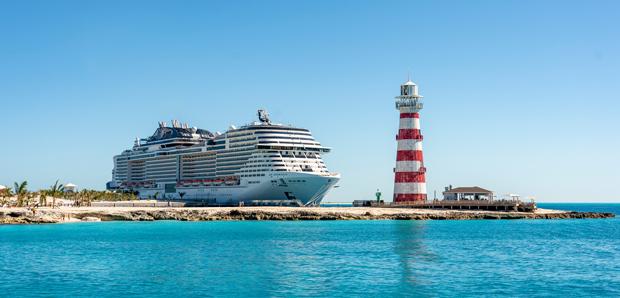
2019
Our fleet continue to grow with the delivery of MSC Bellissima and MSC Grandiosa. Ocean Cay MSC Marine Reserve welcomes its first guests
Two Meraviglia generation cruise ships are built in Saint-Nazaire, France and delivered to us, increasing our fleet’s size to 17 ships. Capable of accommodating up to 5,655 guests, MSC Bellissima enters service in March, offering West Mediterranean itineraries before being deployed to Dubai, United Arab Emirates, in the autumn. With a capacity for 6,334 guests, her bigger sister MSC Grandiosa started service in November, becoming the biggest ship in our fleet. She also started operating in the West Mediterranean. Also, in 2019, and after three years of intensive work, our private island destination in the Bahamas Ocean Cay MSC Marine Reserve welcomes its first guests in December. As part of a multi-faceted restoration strategy, we transformed this former industrial sand excavation site into a stunning tropical destination, working with environmental engineers and other experts to revitalize the surrounding ocean beds, marine life and endangered coral. 1,500 tons of scrap metal were removed and throughout the clean-up process, a team of expert divers and marine biologists carefully removed individual hard coral colonies from debris on the ocean bed and relocated them to an approved location outside the construction area. Actions were taken to create a biodiverse and sustainable environment and more than 75,000 plants and shrubs were planted across the island.
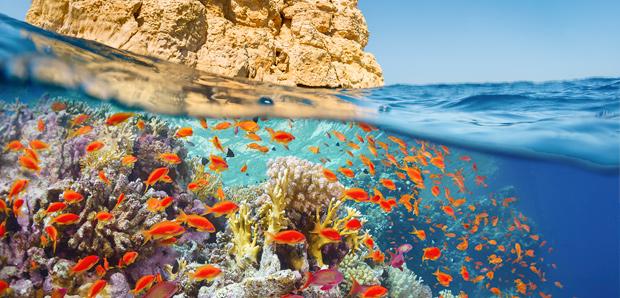
2020
We are the first major cruise line to restart thanks to our leading health and safety protocol. We publish our first Sustainability Report
In the wake of the COVID-19 pandemic and a temporary halt to the entire global cruise industry, we develop and implement a comprehensive Health and Safety protocol that enables us to become the first major cruise line to restart operations in August in the Mediterranean with our flagship MSC Grandiosa. Having worked with internationally renowned health experts and in partnership with relevant international, national and local authorities, our new operational protocol has been designed to protect the health and safety of guests, crew and the coastal communities that our ships reach. In 2020 we also published our first Sustainability report. Built on our long-term sustainability ambitions, this report outlines our vision to continue our longstanding journey towards becoming an environmental leader in the global maritime sector and draws a pathway for us to embrace a sustainable future. The Report is structured around four key pillars: Planet, People, Place and Procurement. The Report also highlights key sustainability milestones achieved in the past year.
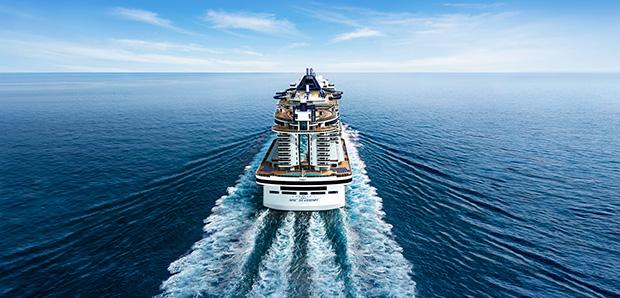
2021
Delivery of MSC Virtuosa and MSC Seashore and reinforcing our industry leadership in Sustainability
Thanks to the pioneering work that we had undertaken since the early days of the pandemic to develop our stringent health protocol, we managed to offer safe and carefree cruise holidays to our Guests throughout the whole year. Despite the challenges of the Covid pandemic two new cruise ships joined our fleet in 2021 – MSC Virtuosa and MSC Seashore. We also advanced with our ambitions to grow our portfolio of cruise terminals, which allow us to anchor our presence in marquee homeports and offer the best service to guests while enabling us to foster a front-to-end integrated experience. In November, we opened the doors of the Nelson Mandela Cruise Terminal in Durban, South Africa. We also obtained final clearance to start building our exclusive cruise terminals in Barcelona and Miami as key embarkation ports in the western Mediterranean and the Caribbean. In 2021, we also took an important step forward in Sustainability and reinforced our industry leadership in this field by pledging to achieve net-zero greenhouse gas emissions by 2050 for our marine operations.
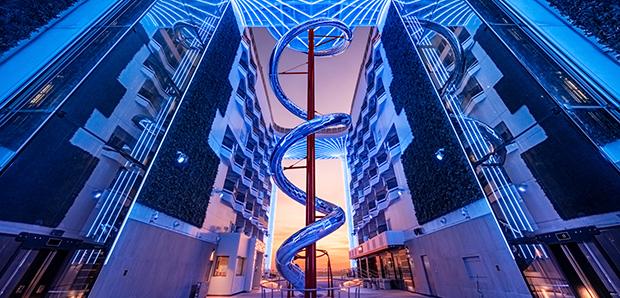
2022
Delivery of MSC World Europa, the first LNG-powered ship of our fleet and introducing innovative environment-protecting technologies.
In 2022 we were delighted that we finally saw the restart of the entire fleet and progressively and safely ease Covid restrictions. We also continued to make significant progress along our sustainability journey. Over the year, we launched two new ships which introduced several innovative environment-protecting technologies. In October, we took delivery of the MSC World Europa, the first to be LNG-powered. It features a pilot solid oxide fuel cell (SOFC) and incorporates a selective catalytic reduction (SCR) system – which reduces nitrogen oxide emissions by up to 90% by converting the gas into harmless nitrogen and water – and shore-to-ship power connectivity, which allows MSC World Europa to minimise engine use at ports wherever the portside infrastructure is available. In November, we took delivery of the MSC Seascape which include hybrid exhaust gas cleaning systems that remove 98% of sulphur oxide from ships’ emissions. We continuously reviewed our itineraries to lower emissions intensity and our MSC Protectours, dedicated excursions that are specifically designed to educate our guests and promote responsible tourism and responsible travel.

